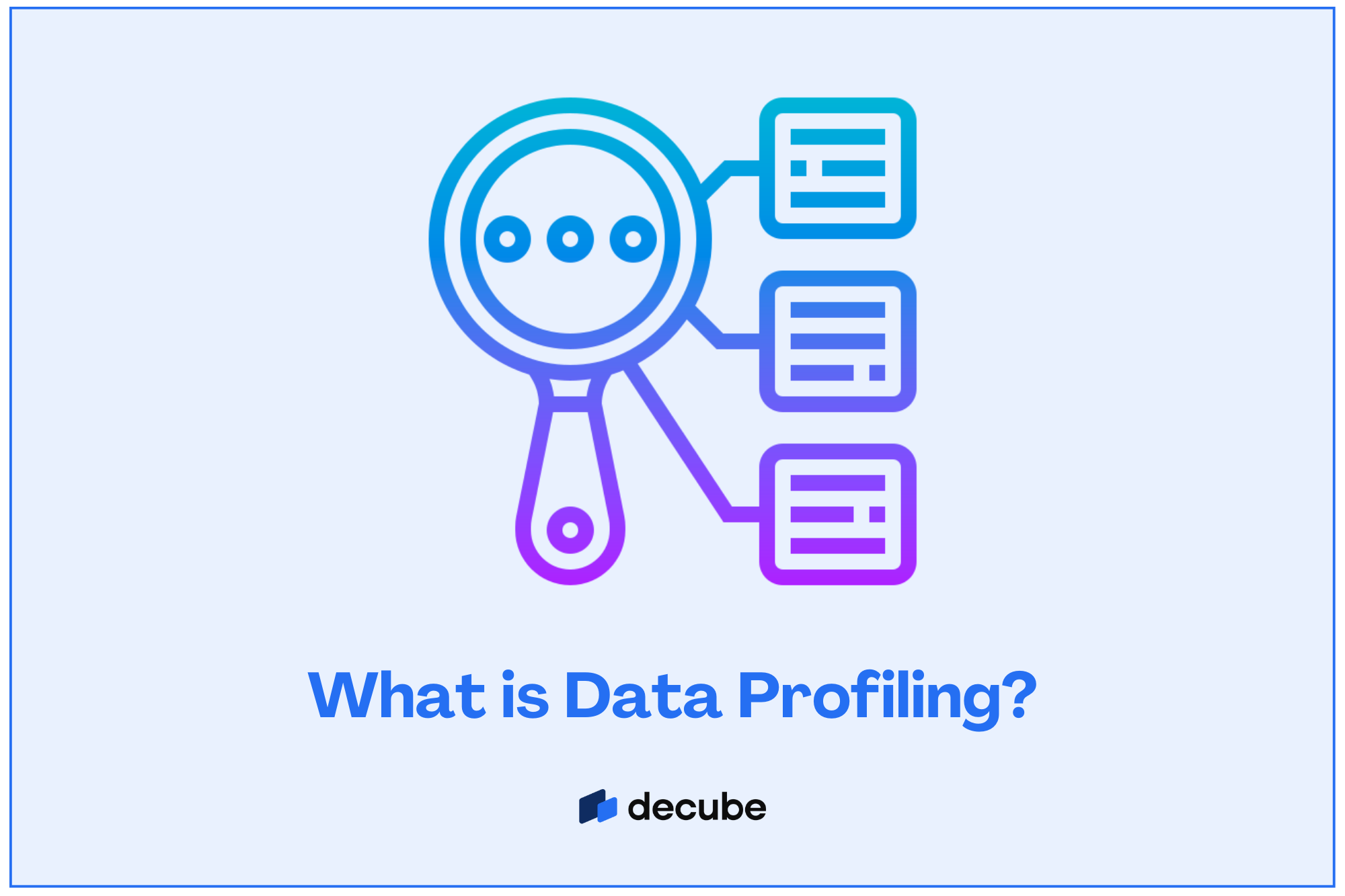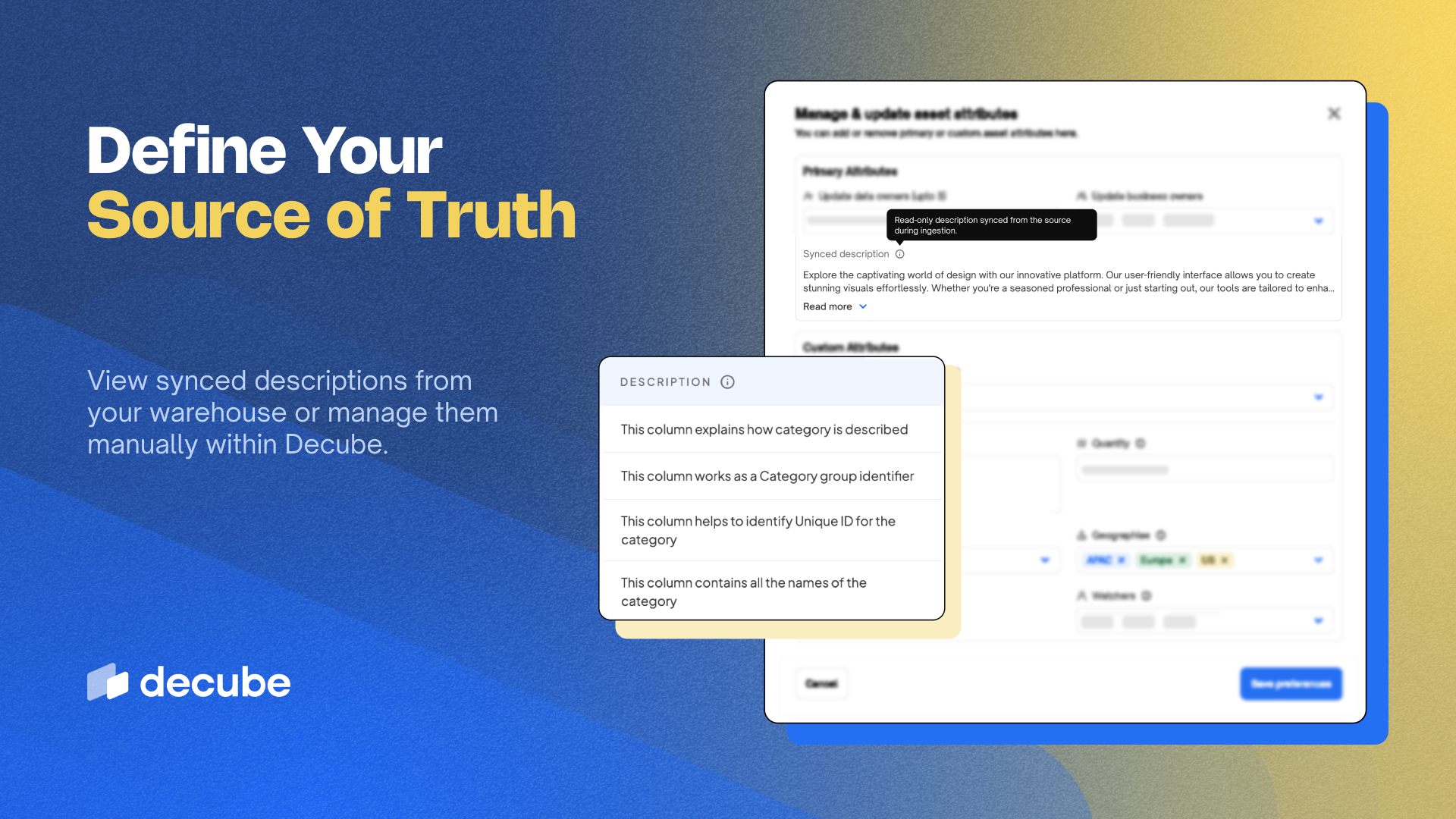Kindly fill up the following to try out our sandbox experience. We will get back to you at the earliest.
Data Profiling: Process, Best Practices and Tools
Discover the importance of data profiling in analysis, ensuring data quality, integrity, and optimal management for informed decision-making

Introduction
Did you know that data quality issues can cost organizations up to 20% of their revenue? That's a staggering figure, but unfortunately, it's not uncommon. Today's data-obsessed world needs the accuracy and reliability of data for the success of businesses as much as the data itself. This is where data profiling comes in. Data profiling is scrutinizing data to identify patterns, inconsistencies, and kinks, and to ensure that data is accurate and reliable. By using data profiling techniques, organizations can not only avoid costly data quality issues but also gain valuable insights that can help drive business decisions and improve outcomes.
In today’s blog, we'll explore the ins and outs of data profiling, including its benefits, challenges, and real-world applications. So, let's dive in!
Data profiling is a crucial part of data governance, data management, and data integration processes, as it enables organizations to make better decisions based on dependable and trustworthy data.
Why is Data Profiling Important?
Data profiling is important for several reasons. To start with, it helps organizations improve the quality of their data by identifying and addressing data quality issues, such as missing, inaccurate, or inconsistent data.
Secondly, data profiling helps organizations to understand their data better, which is essential for effective data governance and management. By identifying the format, relationships, and dependencies within their data, organizations can better manage their data assets, ensure compliance with regulations, and reduce the risk of data breaches or other security incidents.
Thirdly, data profiling helps organizations to save time and resources by automating the process of data discovery and analysis. Time saved is equal to money saved!
The Process of Data Profiling
The process of data profiling typically involves several stages, including data discovery, data analysis, data cleansing, and data enrichment.
- Collect Data: Data is information that we gather from different sources. Like gathering data about how many visitors a website had, clicks, and how long they stay on a website.
- Check Data Quality Issues: Next, we need to check if the collected data is accurate and complete, which means that we need to make sure that there are no mistakes, gaps, or incorrect information in the data.
- Examine Data: After we have identified any issues with the data, we need to analyze the data to comprehend it better. We look for patterns and trends in the data, and we try to find relationships between different pieces of information.
- Document Findings: As we analyze the data, we write down what we find which will help us remember what we learned and share it with others.
- Improve Data Quality: If we find any problems with the data during the analysis, we work to fix them. We might need to go back and collect more data or correct errors in the existing data.
- Communicate Results: Finally, we share what we have learned with others. This might mean presenting our findings in a report, creating charts and graphs to illustrate the data, or simply explaining what we found to others.
These steps can help us better understand the data we have collected and make sure it is accurate and reliable. The correct decisions made, impact many different areas of our lives, from business to healthcare to education and hence accurate data is important.
Data Profiling Tools and Software
There are several data profiling tools and software available in the market, including open-source tools. Some new-age tools and software that are making a big impact in the world of data profiling are:
- Machine Learning: Machine learning allows computers to learn and make predictions based on patterns in data. Machine learning algorithms are being used to automate and improve the data profiling process, making it faster and more accurate.
- Data Visualization Tools: Data visualization tools allow users to create graphs and charts to help them better understand their data or you may say make the complex data look simple. These tools make it easier to identify patterns and tendencies in data, and to share findings with others.
- Natural Language Processing (NLP): NLP focuses on the interchange between computers and human languages. NLP tools are being used in data profiling to help identify patterns and trends in unstructured data, such as social media posts or customer reviews.
- Cloud Computing: With cloud computing, users can store and access data and applications over the internet, rather than on a local computer or server. This makes it easier to manage and analyze large volumes of data, and to collaborate with others on data profiling projects.
- Data Governance Software: Data governance software helps organizations manage their data assets by providing a framework for defining policies and procedures around data quality, security, and privacy. This software can help ensure that data is accurate, consistent, and compliant with regulations.
These new-age tools are making a big impact on the world of data profiling, helping organizations to manage and analyze their data more effectively and efficiently. They are helping to drive innovation and progress in many different fields, from healthcare to finance to marketing. As technology is on the bull run, we can expect to see even more powerful tools and software emerge in the world of data profiling, enabling us to better understand and harness the power of data.
Challenges in Data Profiling
Data profiling can be a demanding process, as it requires a high level of expertise, knowledge, and attention to detail. Some of the common challenges in data profiling include:
- Data Quality Issues: Data quality issues can occur due to multiple reasons, including errors in data entry, missing data, or inconsistencies between data sets. For example, if a hospital is gathering patient data manually and there are inconsistencies in how different staff members enter the data, it can lead to errors and inconsistencies in the data. This can impact the accuracy of the data profiling process and lead to incorrect insights.
- Data Volume: As the volume of data increases, it can become more difficult to manage and analyze. Say a retail company may collect data on customer purchases, including information on what items were bought, when they were bought, and how much was spent. As the number of customers increases along with the transactions they do, it can be difficult to analyze and interpret this data effectively.
- Data Variety: Data comes in many different forms, including structured data (such as data stored in a database) and unstructured data (such as social media posts or customer feedback). This variety of data can make it difficult to manage and analyze. If a company wants to analyze customer feedback to identify trends and patterns, this data is often unstructured and can be difficult to analyze using traditional data profiling methods.
- Data Security: It is enough said that data security is a major concern, as the threat of data breaches and cyber attacks continues to grow. If a financial institution is profiling customer data, it is critical that this data is kept secure and protected from unauthorized access or use. Any violation of this data can lead to financial losses, reputational damage, and legal liability.
- Legal and Ethical Considerations: There are also legal and ethical considerations when it comes to data profiling. Negligence to comply with these laws can result in fines and legal action. Additionally, companies must consider the ethical implications of profiling data, such as the potential for discrimination or bias in the analysis of certain groups or demographics.
By understanding these challenges and taking steps to address them, organizations can ensure that their data profiling efforts are effective and accurate, while also maintaining the security and privacy of their data and complying with legal and ethical requirements.
Best Practices for Data Profiling
To ensure the success of data profiling, it is important to follow best practices, such as:
- Define clear objectives and requirements for data profiling.
- Use a systematic approach to data profiling, including a well-defined process and methodology.
- Involve stakeholders from different departments and functions in the data profiling process.
- Use a variety of data profiling techniques and tools to get a comprehensive view of the data.
- Address data quality issues as soon as they are identified.
- Document the results and findings of the data profiling process.
- Continuously monitor and improve the data profiling process over time.
Conclusion: Benefits of Data Profiling for Business
Organizations can't afford to ignore the importance of data profiling. With the volume and complexity of data continuing to grow, the accuracy and reliability of data are critical for a business to flourish. By implementing effective data profiling techniques, organizations can avoid costly data quality issues, gain valuable insights, and make informed decisions that drive business success. But it is important to note that data profiling is not without its challenges, and organizations must be prepared to address issues such as data quality, volume, variety, security, and legal and ethical considerations. By taking these challenges into account and working to overcome them, organizations can unleash the full potential of their data and achieve a competitive advantage in their industry.
External Reference:
- Data Profiling: Best Practices and Tools
- Using the data profiling tools - Power Query | Microsoft Learn

_For%20light%20backgrounds.svg)
















